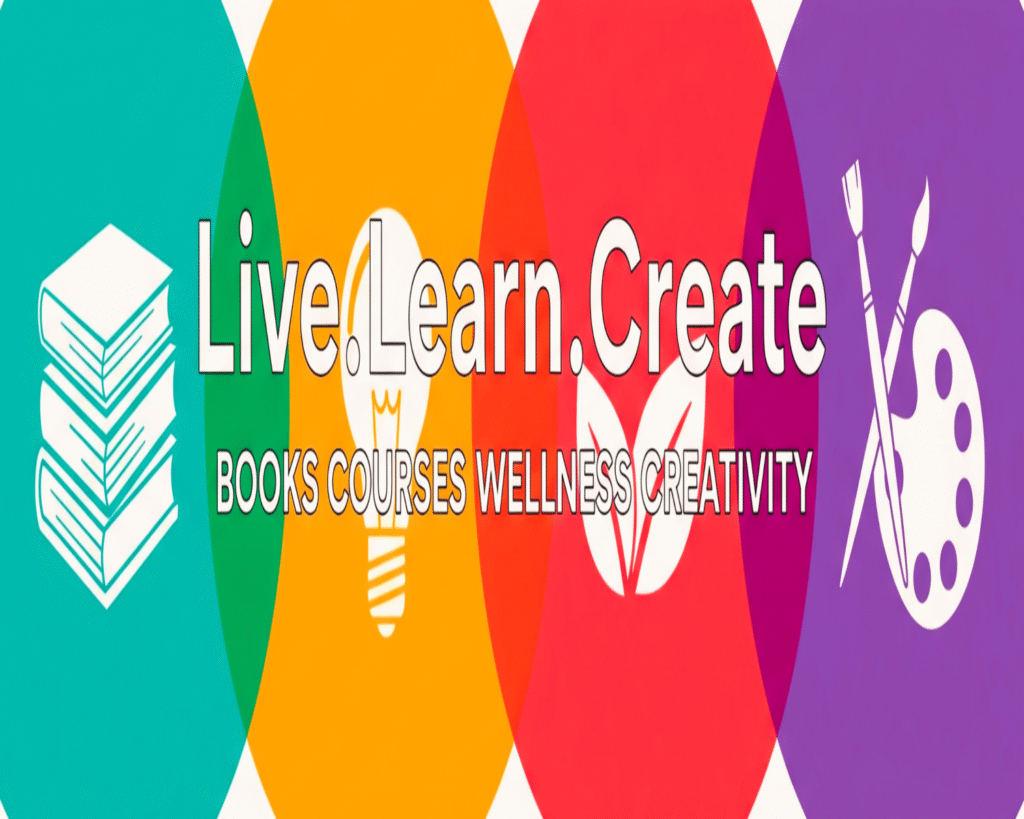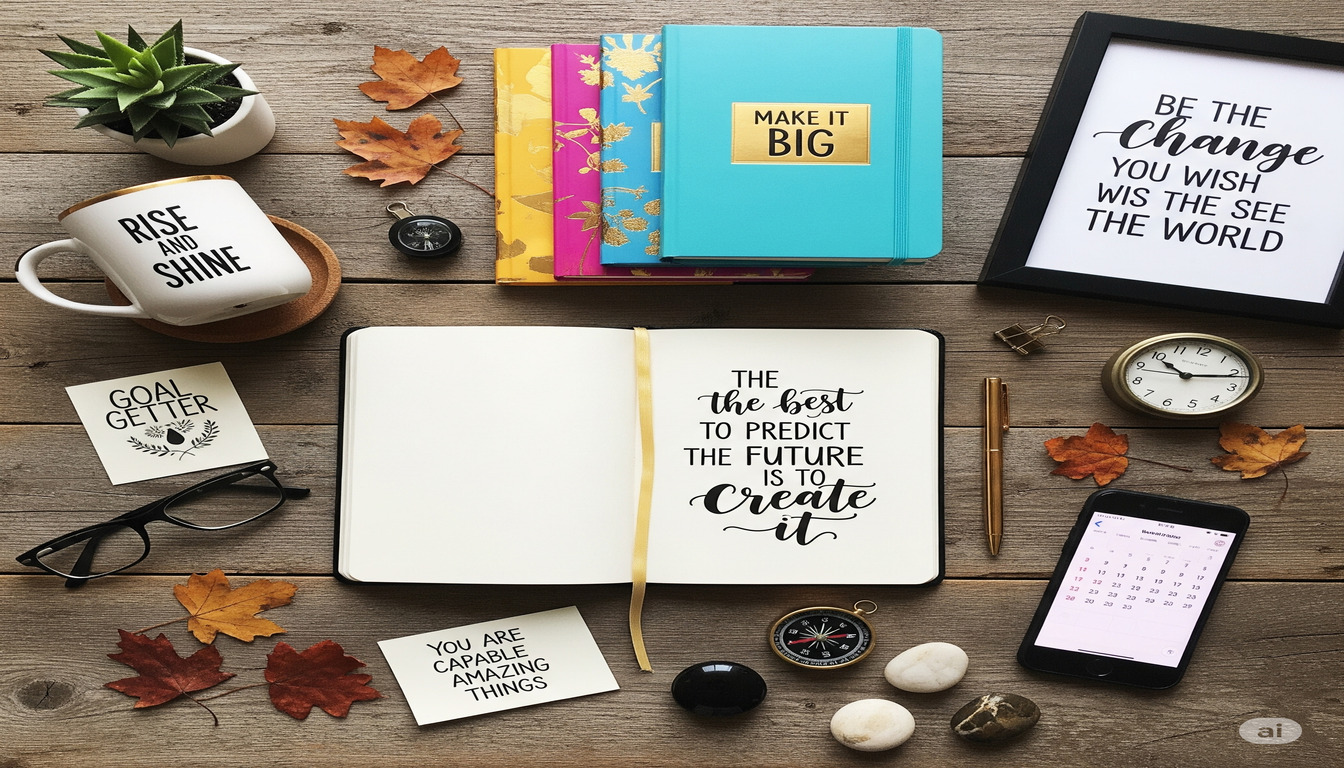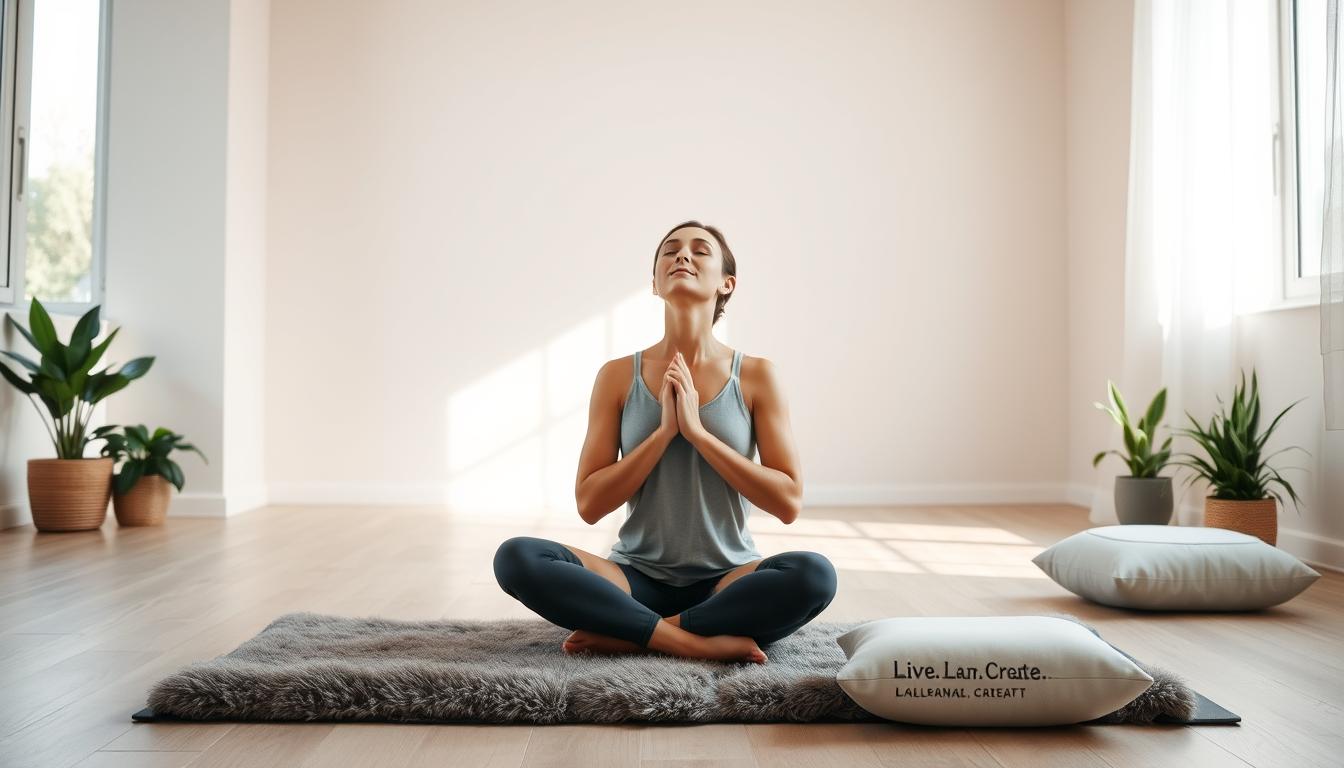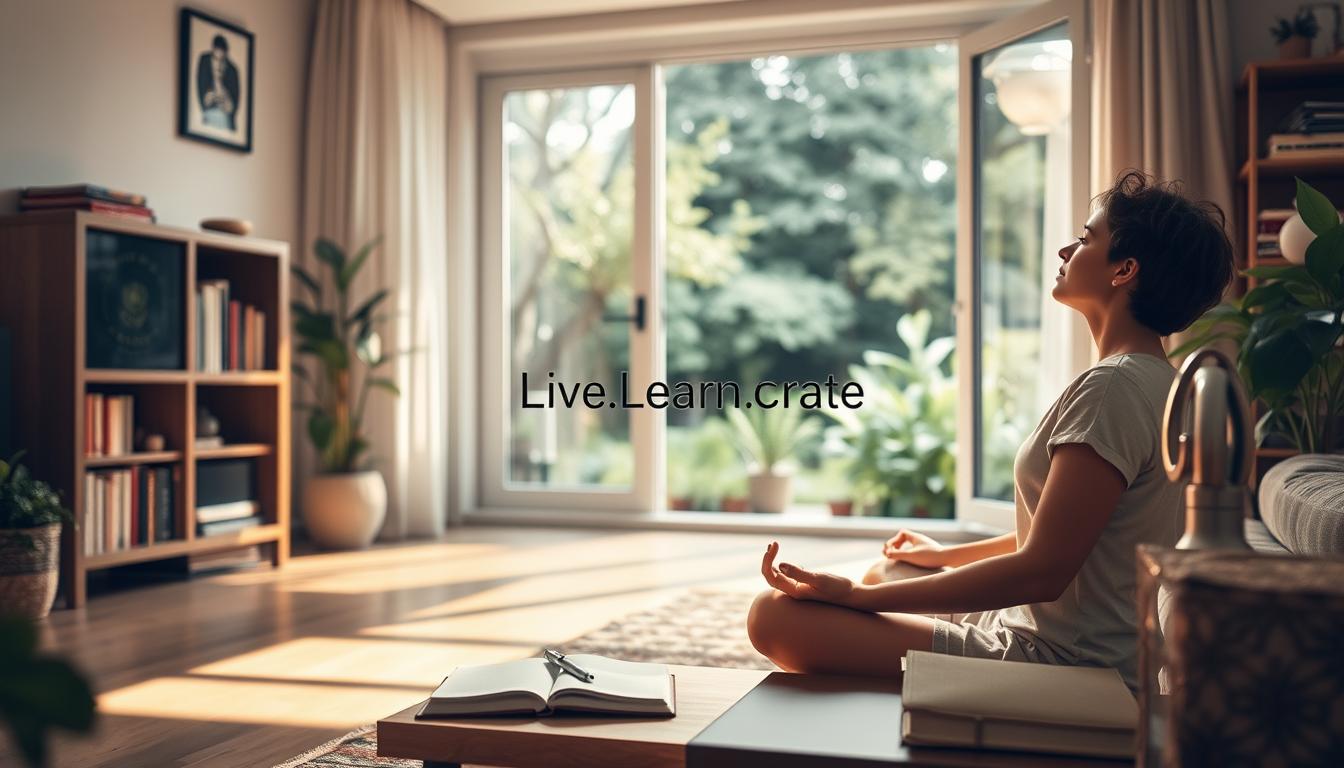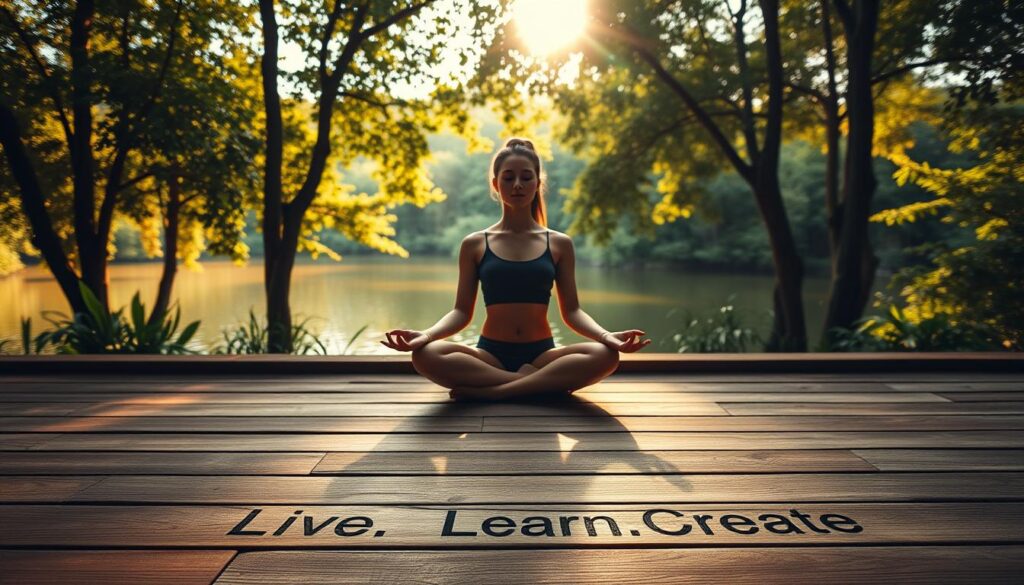
In today’s fast-paced world, stress and anxiety have become unwelcome companions for many of us. Surprisingly, studies show that regular meditation practice can significantly reduce these feelings, leading to a more peaceful life.
Focusing on the present moment allows us to break free from the burdens of the past and the anxieties of the future. By incorporating mindfulness into our daily routine, we can cultivate a deeper sense of calm and clarity.
Ready to start building a life you love? By exploring the transformative practice of meditation and its benefits, you’ll be taking the first step towards a more balanced and fulfilling life.
Key Takeaways
- Discover how mindfulness can reduce stress and anxiety.
- Learn the true meaning of mindfulness beyond the buzzword.
- Explore the science-backed benefits of mindfulness practice.
- Find practical techniques to integrate mindfulness into your daily life.
- Understand how to maintain consistency in your mindfulness practice.
Understanding Mindfulness: The Art of Being Present
At its core, mindfulness is the art of being fully present and aware in the moment. This practice involves cultivating a non-judgmental awareness of the present moment, often by focusing on sensations to root yourself in your body.
What Mindfulness Really Means
Mindfulness is often misunderstood as simply “emptying your mind” or achieving a perfect state of calm. However, it’s actually about developing the skill of bringing your attention back to the present moment repeatedly. It involves observing your thoughts and feelings without judgment, noticing them with curiosity rather than getting caught up in them.
The Difference Between a Mindful and a “Mind Full” State
The difference between being mindful and having a “mind full” is profound. One state is characterized by awareness and presence, while the other involves being lost in a stream of thoughts, worries, and distractions. By practicing mindfulness, you can change your relationship with your mind and thoughts, learning to see them as passing mental events rather than absolute truths.
By gently training your attention to stay in the present moment and bringing it back when it wanders, you can transform your experience of life. This simple yet profound shift in awareness allows you to fully participate in each moment, rather than being pulled into past regrets or future worries.
The Science-Backed Benefits of Mindfulness
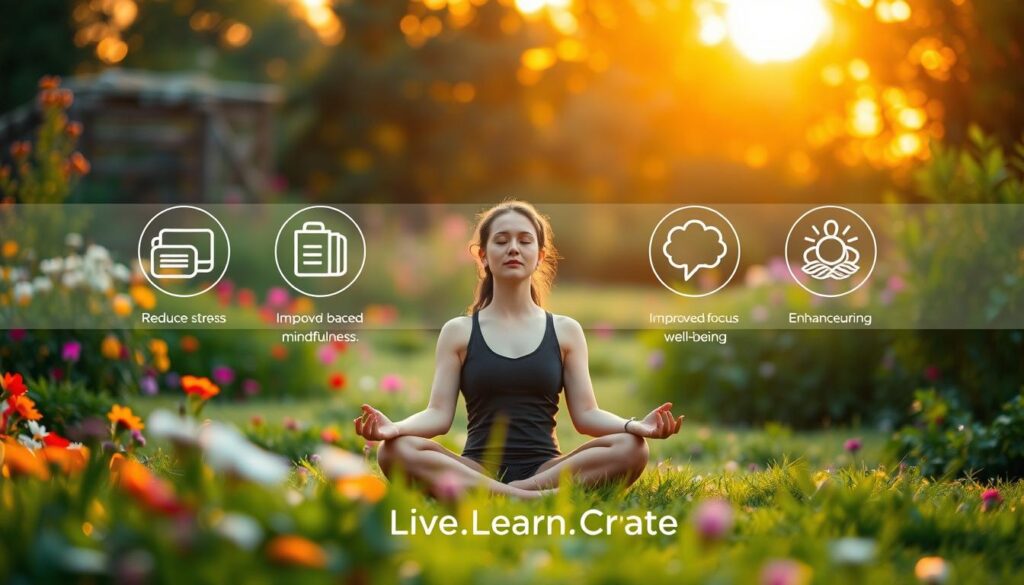
The benefits of mindfulness are not just anecdotal; they’re backed by a growing body of research showing measurable changes in both brain structure and function. As we explore the science behind mindfulness, it becomes clear that this practice offers a wide range of benefits for our overall health.
Mental Health Benefits: Reducing Anxiety and Depression
Regular mindfulness practice has been shown to significantly reduce symptoms of anxiety and depression. Studies have found that mindfulness can be as effective as medication for certain conditions, making it a valuable tool for mental health management. By reducing stress and promoting relaxation, mindfulness helps individuals better cope with challenging emotions.
Physical Health Improvements
Mindfulness practice is associated with various physical health improvements, including reduced blood pressure, strengthened immune function, and better sleep quality. Additionally, mindfulness has been shown to decrease inflammation levels throughout the body, contributing to overall well-being.
Brain Health and Cognitive Function
Brain scans of long-term meditators reveal changes in brain structure, including increased gray matter density in regions associated with attention and emotional regulation. Mindfulness may even slow brain aging, with studies showing lower rates of annual brain tissue loss in meditation practitioners compared to non-meditators.
By incorporating mindfulness into daily life, individuals can experience these benefits firsthand. Prioritize your well-being and find a healthier you at https://livelearncreate.blog.
Getting Started with Mindfulness Meditation
Embarking on a mindfulness meditation journey can be a transformative experience, offering a path to inner peace and reduced stress. As you start this practice, you’ll find that it’s not about achieving a specific state but rather about cultivating awareness in the present moment.
Creating Your Meditation Space
To support your meditation practice, consider creating a dedicated space that fosters calmness and serenity. Choose a quiet corner where you won’t be disturbed, and make it inviting with a comfortable cushion, a plant, or a meaningful object. This space will become your sanctuary for cultivating mindfulness.
- Dedicate a quiet area for your meditation practice.
- Add elements that promote relaxation, such as a cushion or a plant.
- Make this space your haven for mindfulness and self-reflection.
The Breath as Your Anchor
The breath serves as the perfect anchor for mindfulness meditation because it’s always with you, providing a natural rhythm to focus your attention. Notice the sensation of air entering and leaving your nostrils, the rise and fall of your chest, or the expansion and contraction of your belly. This simple yet powerful technique helps you stay present.
Setting Realistic Expectations for Beginners
As a beginner, it’s essential to set realistic expectations for your meditation practice. Understand that your mind will wander, and this is a normal part of the process. Each time you bring your focus back to the breath, you’re strengthening your awareness muscle. Start with short sessions, like 5 minutes daily, and be consistent in your practice.
- Begin with short, manageable sessions.
- Be gentle with yourself as your mind wanders.
- Consistency is key to developing a strong mindfulness practice.
By following these guidelines and maintaining a commitment to your practice, you’ll unlock the potential of mindfulness meditation and discover a more peaceful, aware you. Visit https://livelearncreate.blog to explore more resources on mindfulness and personal growth.
8 Essential Mindfulness Techniques for Daily Life
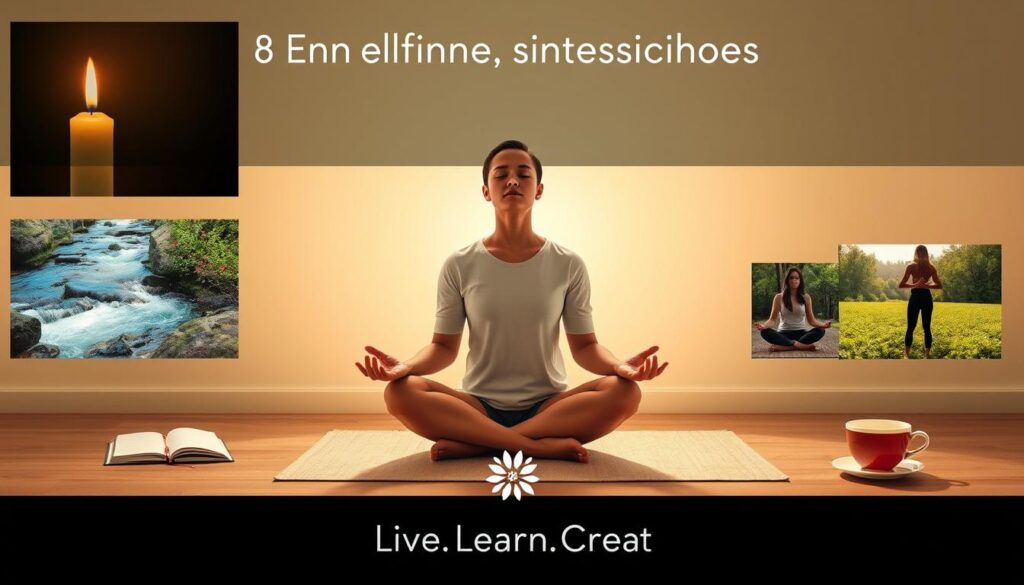
To navigate the challenges of modern life, it’s helpful to have a toolkit of mindfulness techniques at your disposal. Mindfulness is a powerful practice that can transform your daily life by reducing stress and increasing awareness. Here are eight essential techniques to get you started on your mindfulness journey.
Focused Attention Meditation
Focused Attention Meditation forms the foundation of most mindfulness practices. By repeatedly bringing your attention back to your breath whenever your mind wanders, you strengthen your concentration and develop greater mental stability. This technique uses the breath to anchor the mind and maintain awareness.
Body Scan Practice
The Body Scan Practice helps reconnect you with physical sensations that you might normally overlook. Moving your attention systematically from head to toe allows you to notice areas of tension, discomfort, or ease without trying to change anything. This practice encourages you to be present with your body and its sensations.
Noting Technique
The Noting Technique involves mentally labeling thoughts, feelings, or sensations as they arise during meditation. This creates a slight distance from mental activity and helps you recognize patterns in your thinking. By noting your experiences, you cultivate a greater understanding of your mind and its tendencies.
Loving Kindness Meditation
Loving Kindness Meditation cultivates compassion for yourself and others through silently repeating phrases like “May I be happy, may I be healthy, may I be safe.” You then extend these wishes to loved ones, neutral people, difficult people, and eventually all beings. This practice fosters a sense of connection and understanding.
Skillful Compassion Practice
The Skillful Compassion Practice focuses on opening your heart by directing caring attention toward someone you care about. Noticing the warm sensations that arise in your own body helps develop emotional resilience and counteracts negativity bias. This practice is particularly helpful in cultivating a sense of compassion and empathy.
Visualization Exercises
Visualization Exercises engage your imagination by having you create and hold a mental image, such as a peaceful landscape or a ball of light. This can be especially helpful for people who find it easier to focus on visual elements rather than bodily sensations. Visualization can help you achieve a state of relaxation and calm.
Resting Awareness Meditation
Resting Awareness Meditation involves simply allowing your attention to rest openly without focusing on any particular object. Thoughts, feelings, and sensations are allowed to come and go naturally without grasping or rejection. This practice encourages a sense of openness and acceptance.
Reflection Practice
The Reflection Practice uses contemplative questions to spark insight rather than analytical thinking. By asking yourself open questions like “What matters most to me?” and noticing what arises, you can access deeper wisdom beyond intellectual understanding. This practice helps you connect with your inner self and your values.
These eight mindfulness techniques offer different doorways into mindfulness meditation practice, allowing you to experiment and discover which approaches resonate most with your particular mind and circumstances. As you explore these practices, remember that the goal is not to achieve a specific state but to cultivate awareness and acceptance in the present moment.
Mindfulness for Anxiety: Techniques for Calming the Mind
Mindfulness provides a gentle yet effective approach to managing anxiety and finding peace in the present moment. By practicing mindfulness, you can develop greater awareness of your thoughts, emotions, and bodily sensations, allowing for better regulation of your response to anxiety triggers.
Progressive Muscle Relaxation
Progressive Muscle Relaxation (PMR) is a technique that involves systematically tensing and relaxing different muscle groups in your body. Start by lying or sitting comfortably, take five deep, slow breaths, and then begin tensing and relaxing your muscles, starting from your toes and moving up to your head. This practice helps release physical tension and promotes relaxation.
Grounding Exercises for Panic Attacks
Grounding exercises are particularly helpful during moments of high anxiety or panic attacks. The 5-4-3-2-1 technique is a simple yet effective method: name five things you can see, four things you can touch, three things you can hear, two things you can smell, and one thing you can taste. This brings your attention firmly into the present moment, reducing feelings of overwhelm.
Mindful Breathing for Immediate Relief
Mindful breathing is a powerful tool for immediate relief from anxiety. Rather than trying to control your breath, simply observe it with curiosity, allowing it to be exactly as it is. This helps calm your nervous system and reduce stress.
By incorporating these mindfulness techniques into your daily life, you can develop greater resilience to anxiety and improve your overall well-being. Visit https://livelearncreate.blog to explore more resources on mindfulness and personal growth.
Incorporating Mindfulness Throughout Your Day
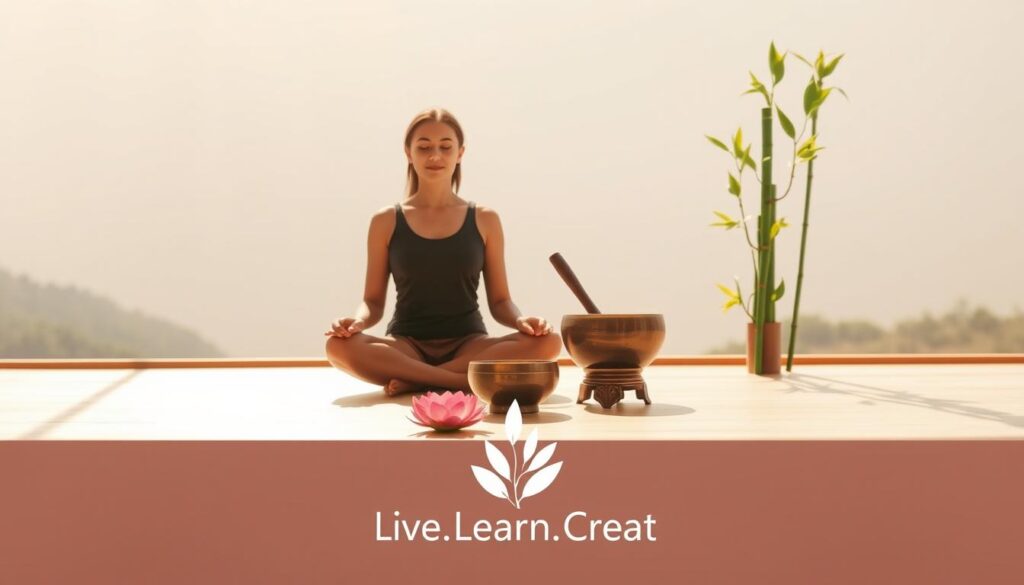
Mindfulness isn’t just about meditation; it’s about bringing awareness to every moment. By practicing mindfulness in daily activities, you can transform your life in profound ways. This approach helps you stay present and fully engage with your surroundings, making everyday experiences more meaningful.
Mindful Eating Practices
Mindful eating involves slowing down and savoring your food. Notice the colors, textures, and aromas of your meal. By putting down your utensils between bites and chewing slowly, you can fully experience the flavors and appreciate the nourishment you’re receiving. This practice turns eating into a moment of mindfulness, enhancing your overall dining experience.
Mindful Walking and Movement
Turning ordinary activities into opportunities for presence is a key aspect of mindfulness throughout the day. Whether you’re taking a dedicated mindful walk or simply bringing awareness to your footsteps as you walk to your car, these practices ground you in your body and the present moment.
Mindful Communication with Others
Practicing mindfulness in your interactions with others can transform your relationships. By truly listening without planning your response and being aware of your body language and tone of voice, you can bring more compassion and understanding to your conversations, making them more meaningful and effective.
Mindful Digital Consumption
In today’s technology-saturated world, mindful digital consumption is increasingly important. Consider implementing practices like taking regular screen breaks, turning off non-essential notifications, and creating tech-free zones in your home to cultivate a healthier relationship with technology and enhance your daily experience.
By incorporating these mindfulness practices into your daily routine, you can find a more balanced and peaceful way of living. Start with one activity and gradually expand to others, making mindfulness a natural part of your day.
Ready to turn your passion into a project? Discover your purpose at https://livelearncreate.blog.
Overcoming Common Mindfulness Challenges
Embracing mindfulness means confronting and overcoming the common challenges that arise during your practice. As you cultivate mindfulness, you’ll inevitably face obstacles that can either hinder or help your progress. By understanding these challenges, you can develop strategies to overcome them and deepen your mindfulness practice.
Dealing with a Wandering Mind
A wandering mind is not a sign of failure but an essential part of the mindfulness practice. Each time you notice your thoughts have drifted and gently bring your attention back, you’re strengthening your mindfulness “muscle.” Many people believe they’re “bad at meditation” because they can’t stop thinking, but the act of noticing and returning is the practice itself.
Finding Time in a Busy Schedule
Finding time for mindfulness in a busy schedule can be challenging, but starting with very short sessions (even just 1-2 minutes) can help. Linking your practice to existing habits, like meditating right after brushing your teeth, can also make it more manageable. Remember, consistency matters more than duration – five minutes daily will yield more benefits than an hour-long session once a week.
Maintaining Consistency in Your Practice
Maintaining consistency becomes easier when you approach your practice with self-compassion rather than rigid expectations. If you miss a day, simply begin again without self-judgment. Joining a meditation group or using an app with reminders can also support your intention and help you stay on track.
By acknowledging the challenges with kindness and working with them rather than against them, you can cultivate a more consistent and rewarding mindfulness practice. With time and patience, many of these challenges naturally diminish as your mind becomes more familiar with the practice, leading to a more profound experience of acceptance and inner peace.
Mindfulness-Based Therapies and Programs
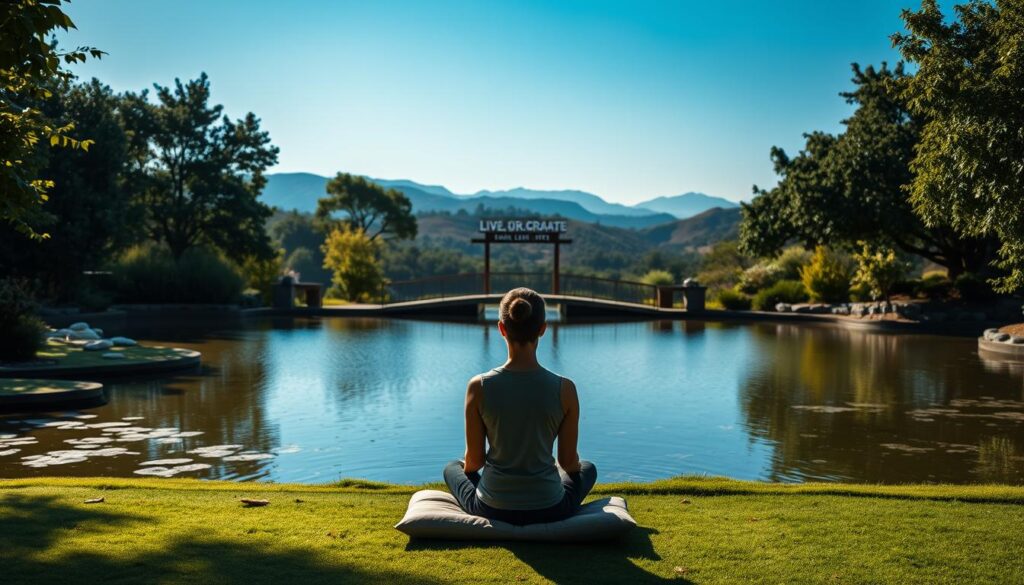
Mindfulness-based therapies and programs have emerged as a powerful tool in enhancing mental health and overall well-being. These structured approaches combine mindfulness practices with other therapeutic techniques to provide comprehensive support.
Mindfulness-Based Stress Reduction (MBSR)
MBSR is an 8-week program developed by Jon Kabat-Zinn that has been extensively researched for its effectiveness in reducing stress and improving quality of life. The program includes formal meditation practices, gentle yoga, and group discussions that help participants develop greater resilience.
Mindfulness-Based Cognitive Therapy (MBCT)
MBCT adapts the MBSR framework to prevent depression relapse by helping participants recognize and disengage from negative thought patterns. Research shows that MBCT can reduce depression relapse rates by approximately 50% in people who have experienced three or more episodes.
Finding the Right Program for Your Needs
When considering a mindfulness-based program, factors to consider include your specific health concerns, time commitment, and whether you prefer learning in a group setting or individually. Many hospitals and wellness facilities now offer these evidence-based programs, making it easier for others to access the support they need.
By exploring these mindfulness-based therapies and programs, you can take a significant step towards enhancing your mental health and overall quality of life. For more resources and community support, visit https://livelearncreate.blog.
Your Journey to a More Mindful Life Starts Now
The path to a more mindful life is not about achieving perfection but embracing the present moment with openness and curiosity. Mindfulness is a way to empty the mind, not fill it, allowing you to show up to the present moment fully.
As you continue your mindfulness practice, you may notice subtle shifts in how you experience life. Colors might seem more vivid, relationships more meaningful, and ordinary moments more extraordinary. Starting a meditation practice is one of the most generous gifts you can give yourself, investing in your mental health and overall quality of life.
For more on mindfulness and personal growth, visit https://livelearncreate.blog. Feeling more present and calm is just the beginning.
FAQ
What is the best way to start a meditation practice?
Begin by setting aside a quiet, distraction-free space and dedicating a few minutes each day to focusing on your breath – a technique that helps calm the mind and cultivate inner peace.
How can I incorporate mindfulness into my daily routine?
You can practice mindful eating by savoring each bite, or try mindful walking by paying attention to your surroundings – simple actions that help you stay present and appreciate the moment.
Can mindfulness help with anxiety and stress?
Yes, numerous studies have shown that regular mindfulness practice can lead to a significant reduction in anxiety and stress levels by teaching you to focus on the present and let go of worries about the past or future.
How long does it take to experience the benefits of mindfulness?
While some people may notice a difference after just a few sessions, others may take longer – be patient and consistent with your practice, as the benefits of mindfulness can unfold over time.
Is it necessary to join a mindfulness program or can I practice on my own?
Both options are viable; you can start with guided meditations and techniques found online or in books, or join a local Mindfulness-Based Stress Reduction (MBSR) program for structured guidance and support.
How can I maintain consistency in my mindfulness practice?
Schedule mindfulness into your daily planner, start small, and be gentle with yourself – making it a habit takes time, and it’s essential to be compassionate when you miss a day or two.
Can mindfulness be practiced by anyone, regardless of age or background?
Absolutely, loving kindness meditation and other techniques can be adapted to suit various needs and abilities, making mindfulness accessible to people from all walks of life.
How does mindfulness affect the brain and body?
Regular practice has been shown to positively impact brain regions related to emotional regulation, memory, and attention, while also reducing inflammation and improving overall well-being.
Transform your home into a more peaceful and mindful sanctuary. Creating a Zen-inspired home environment is a core part of the “Live.Learn.Create” theme, focusing on peace, mindfulness, and a clutter-free space. Here is a curated list of Zen home items.
The Zen Essentials
These items are the building blocks of a calm, intentional living space.
- Candles & Scents:
- Scented Candles: Look for calming, natural scents like sandalwood, lavender, white tea, or bergamot. Choose candles made with soy or beeswax for a clean burn.
- Essential Oil Diffusers: A minimalist, sleek diffuser made of bamboo, ceramic, or glass.
- Essential Oil Sets: Look for blends specifically for relaxation, focus, or sleep.
- Incense & Burners: Natural incense sticks (e.g., palo santo, sage) with a simple, elegant burner.
The Zen Decor
This is about incorporating natural elements and simple design.
- Natural Materials:
- Wood or Bamboo Trays: For organizing candles, stones, or other small items.
- Ceramic Vases: Simple, unglazed ceramic vases in neutral colors like white, beige, or gray.
- Minimalist Art: Simple line drawings, abstract prints, or nature-inspired artwork.
- Hand-Carved Stone Coasters: Or other small stone sculptures.
- Textiles:
- Linen or Cotton Throws: A soft, neutral-colored throw blanket to add warmth.
- Jute or Sisal Rugs: These add natural texture and grounding to a space.
- Meditation Cushions (Zafu) & Mats (Zabuton): These provide comfort for meditation and add a serene touch to a room.
The Zen Ambiance
These items help create a peaceful sensory experience.
- Lighting:
- Himalayan Salt Lamps: These provide a warm, soft glow.
- Japanese-style Paper Lanterns: For a soft, diffused light source.
- Dimmable Smart Bulbs: To easily control the warmth and brightness of your lighting.
- Sound:
- Tabletop Water Fountains: The gentle sound of running water is incredibly calming.
- Wind Chimes: Made from natural materials like bamboo or metal for a soft sound.
- Bluetooth Speakers: Small, aesthetically pleasing speakers for playing ambient or meditation music.
- Nature:
- Bonsai Trees or Air Plants: Low-maintenance indoor plants that bring life and a touch of nature indoors.
- Zen Gardens: A small, tabletop sand garden with a rake and stones for a meditative ritual.
- Decorative Rocks & Pebbles: For bowls or as a decorative element.
Best Sellers https://amzn.to/3Vet1tI
New Releases https://amzn.to/4mwLjTi
Amazon Movers & Shakers https://amzn.to/4fPsZlP
Mindfulness Coloring Books https://amzn.to/4fQ0wMx
Personal Growth Coloring Books https://amzn.to/4lJeRf0
Health & Wellness https://amzn.to/4oRt24C
Zen Home Decor https://amzn.to/3VeA3i6
Zen Garden Decor https://amzn.to/4mXjT8D
Zen Garden https://amzn.to/3HQTVVB
- Mindfulness & Meditation:
- Physical Wellness:
- Habit & Productivity Tools:
- Books:
- Best-selling personal development books (Mindset, The 7 Habits of Highly Effective People, The Subtle Art of Not Giving a F*ck)
- Books on a variety of skills (coding, photography, writing.)
- Educational Gadgets:
- Smart pens that digitize notes (e.g., Rocketbook)
- Portable scanners for digitizing documents
- Laptops, tablets, and accessories
Create (Creativity, Innovation, Projects)
These products cater to your creative side, whether you are a artists, writer, or DIY enthusiasts.
- Creative Supplies:
- Adult coloring books or “paint-by-sticker” books
- Craft kits (e.g., candle-making, pottery, embroidery)
- Digital Creation Tools:
- General Inspiration & Making:

